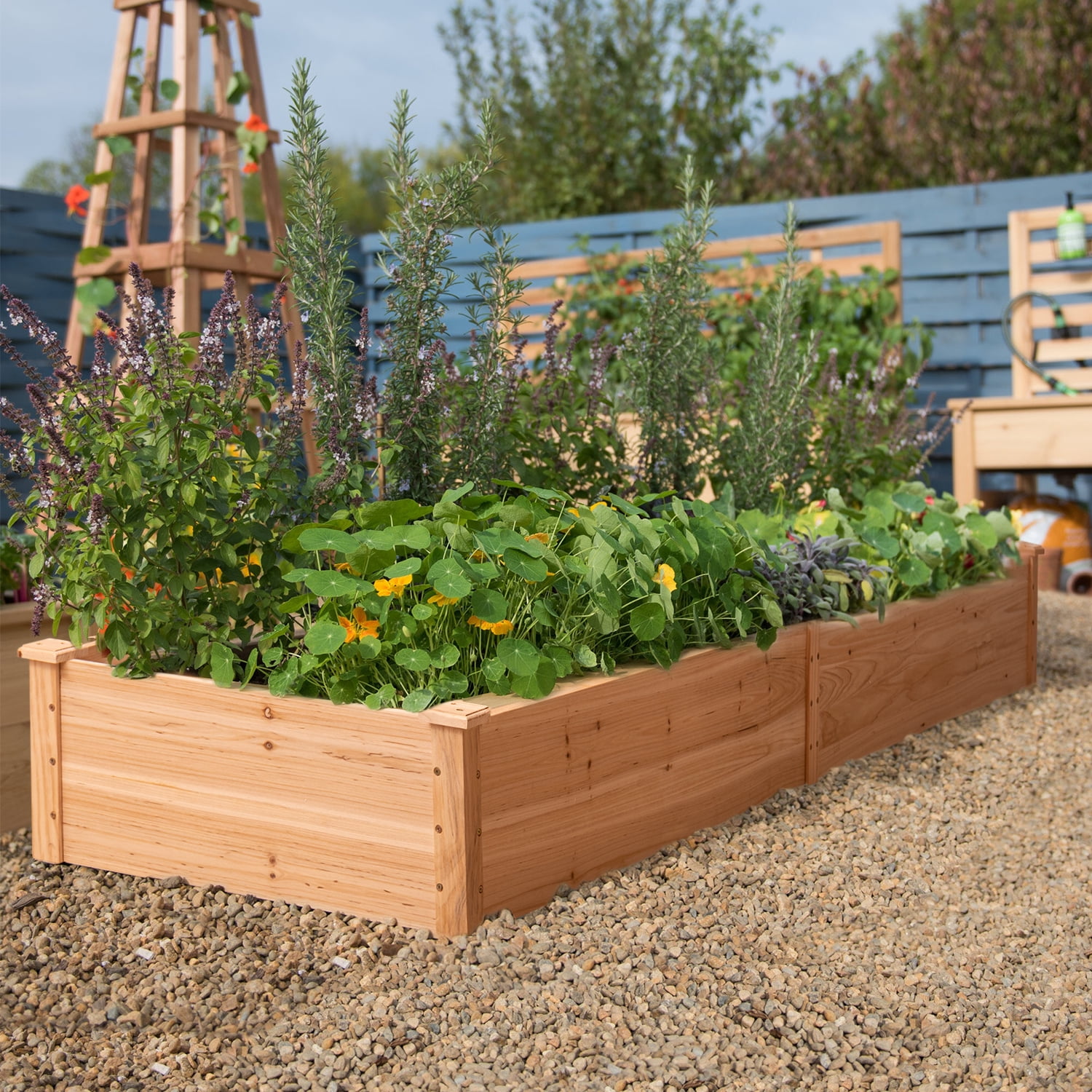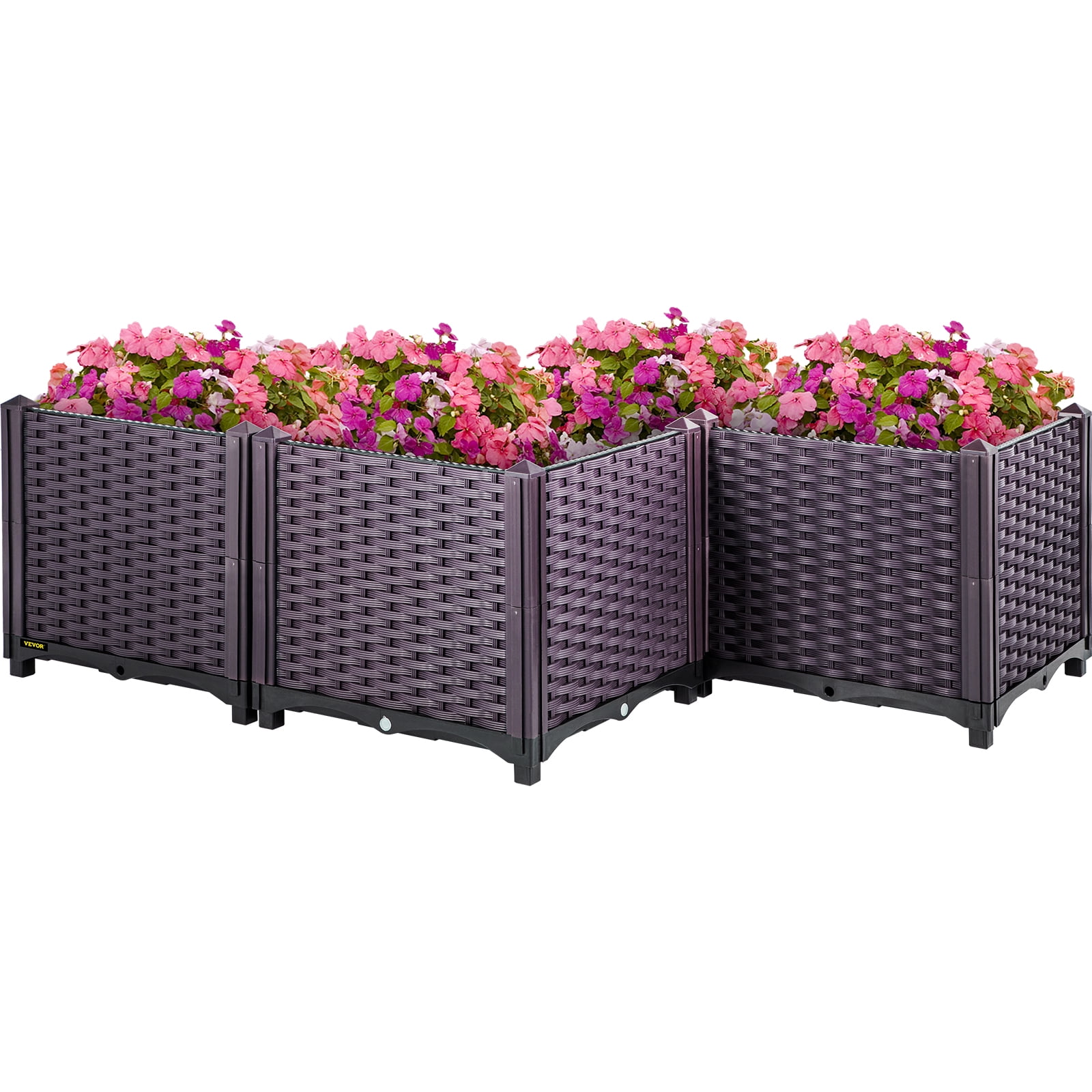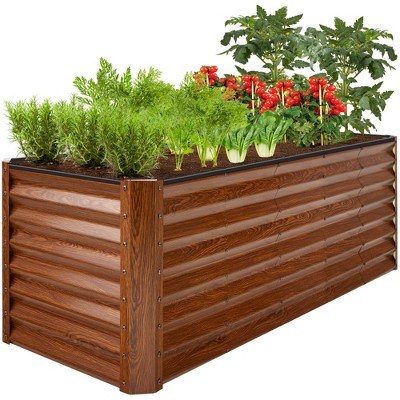How To Build Your Own Box Garden Planters In Easy Steps
Introduction
Growing your own vegetables and herbs is a great way to save money, eat healthier, and enjoy the satisfaction of gardening. But if you don't have a lot of space, a box garden planter is a great option.
Box garden planters are easy to build, and they can be customized to fit your needs. You can choose the size, shape, and materials that you want, and you can even add features like wheels or a built-in watering system.
In this blog post, I will show you how to build your own box garden planter in easy steps. I will also provide some tips for choosing the right materials and designing your planter.
Main Content
Step 1: Choose the right materials
The first step is to choose the right materials for your planter. There are a few factors to consider, such as the size of the planter, the type of plants you will be growing, and the climate in your area.
If you live in a cold climate, you will need to choose materials that are resistant to rot and decay. Cedar and redwood are both good options, as they are naturally rot-resistant. If you live in a warm climate, you can use other materials, such as pressure-treated lumber or composite wood.
The size of the planter will depend on the amount of space you have available and the type of plants you will be growing. If you are growing small plants, such as herbs, you can use a small planter. If you are growing larger plants, such as tomatoes or cucumbers, you will need a larger planter.
Step 2: Design the planter
Once you have chosen the materials, you can start designing your planter. The shape and size of the planter are up to you, but there are a few things to keep in mind.
The planter should be deep enough to accommodate the roots of the plants you will be growing. The width of the planter should be wide enough to allow the plants to spread out.
You may also want to consider adding features to your planter, such as wheels or a built-in watering system. Wheels will make it easy to move the planter around, and a built-in watering system will help you keep the plants watered.
Step 3: Cut the lumber
Once you have designed your planter, you can start cutting the lumber. Use a saw to cut the lumber to the desired dimensions.
Step 4: Assemble the planter
Once the lumber has been cut, you can start assembling the planter. Use screws or nails to attach the pieces of lumber together.
Step 5: Add the bottom
If you are using a planter that will be sitting on the ground, you will need to add a bottom. The bottom can be made from plywood or another type of material.
Step 6: Add the soil
Once the planter is assembled, you can add the soil. Use a high-quality potting mix that is designed for vegetables or herbs.
Step 7: Plant your garden
Now it's time to plant your garden! Choose the plants that you want to grow, and plant them according to the instructions on the plant tags.
Tips
- Use a level to make sure that the planter is level.
- Pre-drill the holes for the screws or nails before you attach the pieces of lumber together. This will help to prevent the wood from splitting.
- Use a sealant to protect the wood from the elements.
- Add a layer of gravel or sand to the bottom of the planter to help with drainage.
- Water your plants regularly, especially during the first few weeks after planting.
Conclusion
Building your own box garden planter is a fun and rewarding project. With a little planning and effort, you can create a beautiful and productive garden that will provide you with fresh, healthy food for years to come.
If you're looking for a way to add some greenery to your home or garden, consider using a box garden planter. These planters are a great way to grow your own vegetables, herbs, or flowers, and they can be customized to fit your needs.
There are many different types of box garden planters available, so you can find one that's the perfect size and shape for your space. You can also choose from a variety of materials, including wood, plastic, and metal.
To learn more about box garden planters, I recommend visiting Garden Wiki. This website has a wealth of information on the topic, including tips on how to choose the right planter, how to prepare the soil, and how to care for your plants.
I've visited Garden Wiki myself, and I found it to be a very informative and helpful resource. The website is easy to navigate, and the information is presented in a clear and concise way.
If you're thinking about using a box garden planter, I encourage you to visit Garden Wiki. You won't be disappointed!
FAQ of box garden planters
Here are the 5 most frequently asked questions about box garden planters, along with valuable insights and solutions:
Question 1: What are the different types of box garden planters?
Answer: There are many different types of box garden planters available, made from a variety of materials. Some of the most common materials include wood, plastic, metal, and concrete. Wood planters are a popular choice because they are beautiful and durable. Plastic planters are lightweight and easy to move, making them a good option for patios and decks. Metal planters are strong and weather-resistant, making them a good choice for outdoor use. Concrete planters are heavy and durable, making them a good option for large gardens.
Question 2: What size box garden planter should I get?
Answer: The size of the box garden planter you need will depend on the type of plants you want to grow and the amount of space you have available. For small plants, such as herbs, you can get a small planter that is 12-18 inches in diameter. For larger plants, such as tomatoes or peppers, you will need a larger planter that is 24-36 inches in diameter.
Question 3: How do I care for a box garden planter?
Answer: Caring for a box garden planter is relatively simple. You will need to water the plants regularly, fertilize them every few weeks, and weed the planter as needed. You may also need to protect the planter from pests and diseases.
Question 4: What plants are good for box garden planters?
Answer: There are many different plants that are good for box garden planters. Some of the most popular choices include herbs, vegetables, flowers, and strawberries. Herbs are a great choice for small planters because they do not require a lot of space. Vegetables, such as tomatoes, peppers, and cucumbers, are also a good choice for box garden planters. Flowers, such as petunias, geraniums, and pansies, can add a touch of beauty to any garden. Strawberries are a delicious and easy-to-grow fruit that is perfect for box garden planters.
Question 5: Where can I buy box garden planters?
Answer: Box garden planters are available at a variety of retailers, including garden centers, home improvement stores, and online retailers. When choosing a planter, be sure to consider the size, material, and style that you want.
Image of box garden planters
- Wooden box planter: This is a classic and versatile option that can be used to grow a variety of plants. The wood will weather over time to give it a natural, rustic look.

- Concrete box planter: This is a more modern and durable option that can withstand the elements. Concrete planters can be painted or stained to match your décor.

- Plastic box planter: This is a lightweight and inexpensive option that is easy to move around. Plastic planters are not as durable as wood or concrete, but they are still a good choice for small gardens.

- Metal box planter: This is a stylish and durable option that can add a touch of industrial chic to your garden. Metal planters can be painted or left in their natural finish.
- Upcycled box planter: This is a fun and creative option that can be made from old boxes, pallets, or other recycled materials. Upcycled planters are a great way to add a unique touch to your garden.


Post a Comment for "How To Build Your Own Box Garden Planters In Easy Steps"